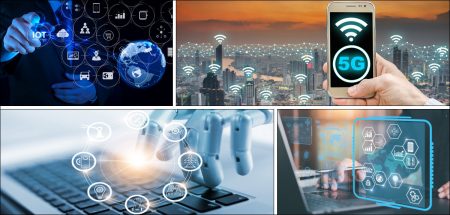Sairaj Iyer goes over several pre-pandemic case-studies and the evolution of work from home scenarios in organizational psyche post the pandemic.
During the pandemic and the lockdowns, working-from-home (WFH) was a riveting concept. Dadi roasting the boss on a Zoom call; Tommy (the family puppy) attending the sales-meeting; and official CEO (Chief Executive Officer) nites in boxer-shorts… WFH to some was as epic as that Summer.
However, the definition of WFH changed over the last few months – a concept that highlighted sustainability and wellness initiatives of enterprises today is a loathed subject.
Elon Musk, the one who took a sink to Twitter office in his early days as its investor, calls ‘Work from Home’ (WFH) bullshit. Musk also chides the desire of ‘laptop classes’ to working from home as ‘immoral.’
Corporate leaders across the globe have echoed similar sentiments. Mark Zuckerberg has indicated his displeasure of WFH and demanded staffers to work from office. Sam Altman, the poster-boy of ChatGPT called that the era of remote work is over. Not visiting office for 3-days in the week would affect Googlers‘ appraisals.
For IBM’s CEO Arvind Krishna, WFH is a hazard to career development… For Rishad Premji, Wipro’s Chairman, staffers must visit office. In the words of journalist turned academician, Malcolm Gladwell, WFH was “hurting society“. The situation has been so dire that even actor Suniel Shetty abhorred WFH, suggesting “Don’t work from home.”
If not for influential businesspeople and social icons, even well-heeled businesses such as JPMorgan and Lloyds Bank have compelled staffers to attend office, respectively. More recently, change in WFH practices caused a disruption in Farmers Group, an insurance agency. This company’s new CEO announced that staffers would have to work from office three days a week. Irate staffers complained that they had made permanent work from home arrangements only last year in line with the company communication that WFH was here to stay.

Was WFH a Misconception?
Recent studies have indicated factors such as burn-out, social, and long-term mental health-impact for a tepid response to WFH in India. Large credible data is scarce, although a 1000-respondent study commissioned by LinkedIn research found that 8 out of 10 Indians were headed back to office by choice. Comparatively, 75% staffers in London were willing to quit than give up on WFH. Additionally, a qualitative study by an IIT-IIM study found that enterprises were “forced” to provide WFH as a benefit. Such data-points imply that any positive outcomes from WFH during the lockdowns may have been just an aberration.
Although an aberration, there were significant advantages from WFH. The unexpected outcome of the Covid-lead lockdown was electricity consumption falling by 19 percent in the month of April 2020. Subsequently, demand for coal fell by 26% while petroleum consumption was lower by 18 percent. Thanks to reduction in GHG (greenhouse gases) emissions, India’s air quality ‘improved by 78%’ in April 2020. One of the significant outcomes was the two-decade low of Aerosol levels in Northern India.
Academicians George Raju and Dharma Raju Bathini in a paper authored in 2015 raised the most pertinent question of WFH – the missing piece of employee cost. Their paper referenced the Andhra Pradesh government’s 2010-15 ICT (Information Communication Technology) policy which focused on WFH as an employee benefit. This was an era where some forward-looking organisations such as IBM and HP justified offering a WFH policy to their employees in India.
The misconception with WFH and Covid is akin to the chicken or the egg first puzzle. To an average CEO, WFH is a technological boon bestowed upon the employee. To staffers, appraisal turns into a Pavlovian tool that employers pull to get work done. Contemporary discourse is therefore an unfortunate display of Brandolini’s phenomenon. That, because pre-Covid studies remained devoted to evaluating the societal, mental, and economic benefits of WFH. Moreover, the reason for introducing, adapting, or implementing newer technology was to supply better productivity rather than engrossing in time-keeping activities at the workplace.

Cases of WFH Benefits
While it may sound surprising to the average CxO, but mankind has dedicatedly worked on maximizing technology to harnessing human potential. In 1973, a study by a Southern Californian research group found that an insurance company could adopt telecommuting as a mode to save $2.73 million per annum. As early as 1993, management Guru Peter F Drucker, declared commuting to office as an obsolete exercise.
A 2015 study by Nicholas Bloom found that the WFH employees of Ctrip observed a productivity increase of thirteen percent. Months later, Ctrip, the 16,000 strong travel-agency listed on Nasdaq announced a policy rejig. This time, it had a slightly larger share of takers for WFH and surprisingly performance was significantly higher at 22 percent. Employees worked more minutes per shift, had fewer breaks, and sick days. These employees also cited improved work satisfaction.
Prior to March 2020, the rare case studies that found mention were Hewlett Packard, IBM, and TCS. And these were shown as corporate enablement credited to a benevolent board. In the case of TCS, Borderless Workspace infused a new way of work-life. A similar experiment was planned at the State Bank of India in 2014 but it was never picked up with the ferocity it should have been. Arundhati Bhattacharya, SBI’s first CMD in two centuries, was drawing a WFH policy in 2014 to increase retention of women staffers. Such a policy could have enabled those women who dropped out of the system owing to migration, childbirth, or looking after dependent parents.
TCS which had a similar policy recently withdrew it and in its recent annual report claimed a significant attrition rate. The women-attrition at TCS surpassed that of even men leaving the management with a slight surprise. To an organization that counts a women participation rate of 35 percent in its rolls and 13 percent of its senior management, the dip was significant and unexpected.

WFH is Good for Tier-3 & 4 Cities
Although unfortunate, the Covid pandemic accelerated the large Indian IT (Information Technology) industry to expand into previously obscure locations such as Thanjavur, Bhubaneshwar, Vadodara, Thiruvananthapuram, Mysuru, Madurai, Mangaluru, Raipur, Vijayawada, Ahmedabad and even Kochi. Enterprises such as Zoho Corporation have had decent success in developing their technological hubs in remote locations such as Renigunta or Tenkasi. The Covid pandemic only exacerbated the presence of mainstream IT firms in such satellite cities.
Firms such as Accenture, Wipro, TCS, and Infosys have been rumored to consider expanding into tier-3 and 4 cities. An example of this phenomenon is the flourishing Vijayawada Highway near Hyderabad, and even cities such as Sikkim and Agartala that have cropped up in discussions for a new satellite office. The propulsion of Information Technology into satellite cities not only benefits employees working closer to their grandparents, but it also changes the economic fabric of these cities for the good.
Sify spoke with five independent HR practitioners who confirmed anonymously that the top board expected staffers to work full-time from the office. “We had a freelancer offering the same service at 50% cost. Our client, a large IT firm, expected only a full-time candidate,” said one HR recruiter.
“Yes, there are tools available, and one can monitor what employees have been doing all day long. But given a corporate must do that means a serious breach of trust. Moonlighting, of course, is a major concern. But beyond that, there is organizational data at stake here and no amount of technology can assuage top management of integrity concerns,” says another HR recruiter.

Prof Madhu Veeraraghavan, Pro-Vice Chancellor – Management, Law, Humanities and Social Sciences, MAHE & T.A.Pai Chair Professor of Finance, TAPMI, explains the integration of WFH and technologies. “We have witnessed a large-scale decoupling of work, workforce, and workplace through the deployment of technology and change in organizational policies. The positives are in the form of better work life balance and reduced commute time. However, issues like moonlighting have raised questions on the sustainability of work from home.”
We also ask Dr Veeraraghavan on the larger narrative and compulsion to go to office. He answers, “See, some of the triggers are internal, organizations are certainly taking a risk management related decision due to issues like moonlighting, data security and compliance. WFH is also being revaluated in customer facing roles if the evidence of quality deterioration in online interface is strong. Besides, organizations are also concerned about performance management, succession planning and career growth issues. Therefore, there is a preference for more direct and face-to-face management of team members.
“The key external trigger is a change in processes and expectations on the client side. If there is a significant migration to legacy processes or to maintain a hybrid policy, organizations will have to proactively respond to client expectations. Also, organizations are taking a comprehensive view on this. For example, prominent private sector banks have moved some roles into a completely WFH mode, while insisting that some roles require a continuous or staggered presence in the office,” he summarizes.
In the words of Apple CEO Tim Cook, WFH was an experiment that went right. Popular software tools accessed at the workplace were mostly birthed during the pandemic’s disruptive period. Prior to the pandemic, it was blasphemous to rely on anything except WhatsApp for a video call. But, with travel restrictions, a behavioral change ensued and corporate were quick to turn to solutions such as Microsoft Teams, Zoom, Anydesk, RemotePC, VPN, and that list is endless. Even highly risk-averse sectors such as banks performed on a WFH mode supporting data-integrity and providing service to customers. Operations such as KYCs were relegated to online mode while a large segment of customers changed to measures such as internet or mobile banking.
To a sector like banking, branchless banking has been discussed umpteen times. No banking CXO would have dared to shut down thousands of branches to test the efficacy of branchless banking. But in April 2020 not a bank failed, and the sector performed “seamlessly” thanks to availability of multiple technologies.
Apple’s Spatial Computing launched a week ago narrates dystopian possibilities. A remote worker tethered through spatial computing could be a productive asset to the corporation. This benefit remains imaginary unless one envisions a truly remote and collaborative work-culture.










2 Comments
Have forwarded this article to my shameless HR head who wants every staff to warm their seats at the workplace! Worse, every team-briefing starts with a moral lecture on why to work from office. We can offer better productivity and save on the travelling costs too. Dont know when our bosses are going to wake up!
Large organizations have a significant amount of capital locked in office spaces. Hence, it is unsurprising that many are resistant to fully accepting the WFH policy even for suitable roles. At the same time, the hybrid policy is easier said than done. It might lead to subtle issues such as unequal opportunities among employees. It will be interesting to watch how firms evolve to incorporate employee and client expectations in this regard.